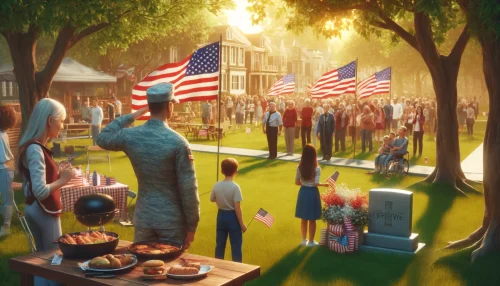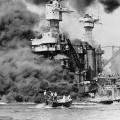
Memorial Day is a cherished holiday in the United States, observed on the last Monday of May each year. It honors the men and women who have died in military service to the nation. This day of remembrance has a rich history, unique traditions, and serves as a time for Americans to come together in gratitude and reflection.
History of Memorial Day
Memorial Day, originally known as Decoration Day, originated after the Civil War to commemorate the Union and Confederate soldiers who died in the conflict. The name “Decoration Day” was derived from the tradition of decorating graves with flowers, flags, and wreaths.
Early Observances
The first large-scale observance of Decoration Day was held on May 30, 1868, at Arlington National Cemetery. General John A. Logan of the Grand Army of the Republic, a Union veterans’ group, declared the date for decorating the graves of fallen soldiers. The date was chosen because it did not commemorate any specific battle, allowing all Americans to honor their fallen heroes equally.
Evolution to Memorial Day
Over time, Decoration Day evolved to honor all American military personnel who died in all wars, not just the Civil War. The term “Memorial Day” became more common after World War II, and in 1967, it was officially declared the holiday’s name by federal law. The Uniform Monday Holiday Act of 1968 established Memorial Day as the last Monday in May to create a three-day weekend for federal employees, with the law taking effect in 1971.
How We Celebrate Memorial Day
Remembrance and Reflection
Memorial Day is marked by various observances and activities across the country. Many Americans visit cemeteries and memorials to honor those who have died in military service. Volunteers often place American flags on graves of military personnel in national cemeteries.
Parades and Ceremonies
Parades are a common sight on Memorial Day, featuring military personnel, veterans, and various community groups. Major cities like Washington, D.C., New York, and Chicago host some of the largest parades. These events serve as a public display of patriotism and remembrance.
National Moment of Remembrance
At 3:00 PM local time, Americans are encouraged to pause for a moment of silence to remember and honor those who have died in military service. This National Moment of Remembrance, established by Congress in 2000, unites the nation in a collective moment of reflection.
Patriotic Displays and Traditions
Homes and public buildings are often adorned with American flags, and patriotic music is played at various events. Many communities hold special ceremonies, including speeches by veterans and public officials, to honor the fallen.
Family Gatherings and Recreation
Memorial Day also marks the unofficial start of summer, and many Americans celebrate with family gatherings, barbecues, and outdoor activities. Parks, beaches, and other recreational areas are popular destinations. It’s a time for families to come together, enjoying the freedom that those who served and sacrificed have preserved.
Interesting Details about Memorial Day
Poppies as a Symbol
The red poppy is a symbol of remembrance and is often worn on Memorial Day. This tradition was inspired by the World War I poem “In Flanders Fields” by Lieutenant Colonel John McCrae, which described poppies growing among soldiers’ graves in Europe. The American Legion adopted the poppy as a symbol of remembrance in 1920.
Memorial Day Traditions Across the States
Each state has its own unique ways of observing Memorial Day. For example, in Waterloo, New York, considered the birthplace of Memorial Day, there are elaborate celebrations including a parade and a Civil War encampment. In the South, Confederate Memorial Day is observed in some states on different dates, focusing on the soldiers who served the Confederacy.
Impact on American Culture
Memorial Day has had a significant impact on American culture, influencing music, literature, and film. Songs like “Taps,” traditionally played at military funerals and memorials, evoke deep emotions. Literature and films often depict the heroism and sacrifices of military personnel, reinforcing the importance of this day.
Conclusion
Memorial Day is a profound and important holiday in the United States, serving as a time to honor and remember the brave men and women who have given their lives in service to the country. From its origins as Decoration Day to its current status as a national day of remembrance, Memorial Day encompasses a rich history and a variety of traditions. As Americans gather with family and friends, they reflect on the sacrifices made for their freedom, ensuring that the legacy of those who served lives on.
By understanding the history, traditions, and cultural impact of Memorial Day, we can appreciate the significance of this day and continue to honor those who have given everything for the nation’s ideals and security.








